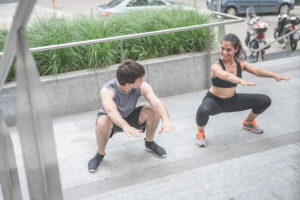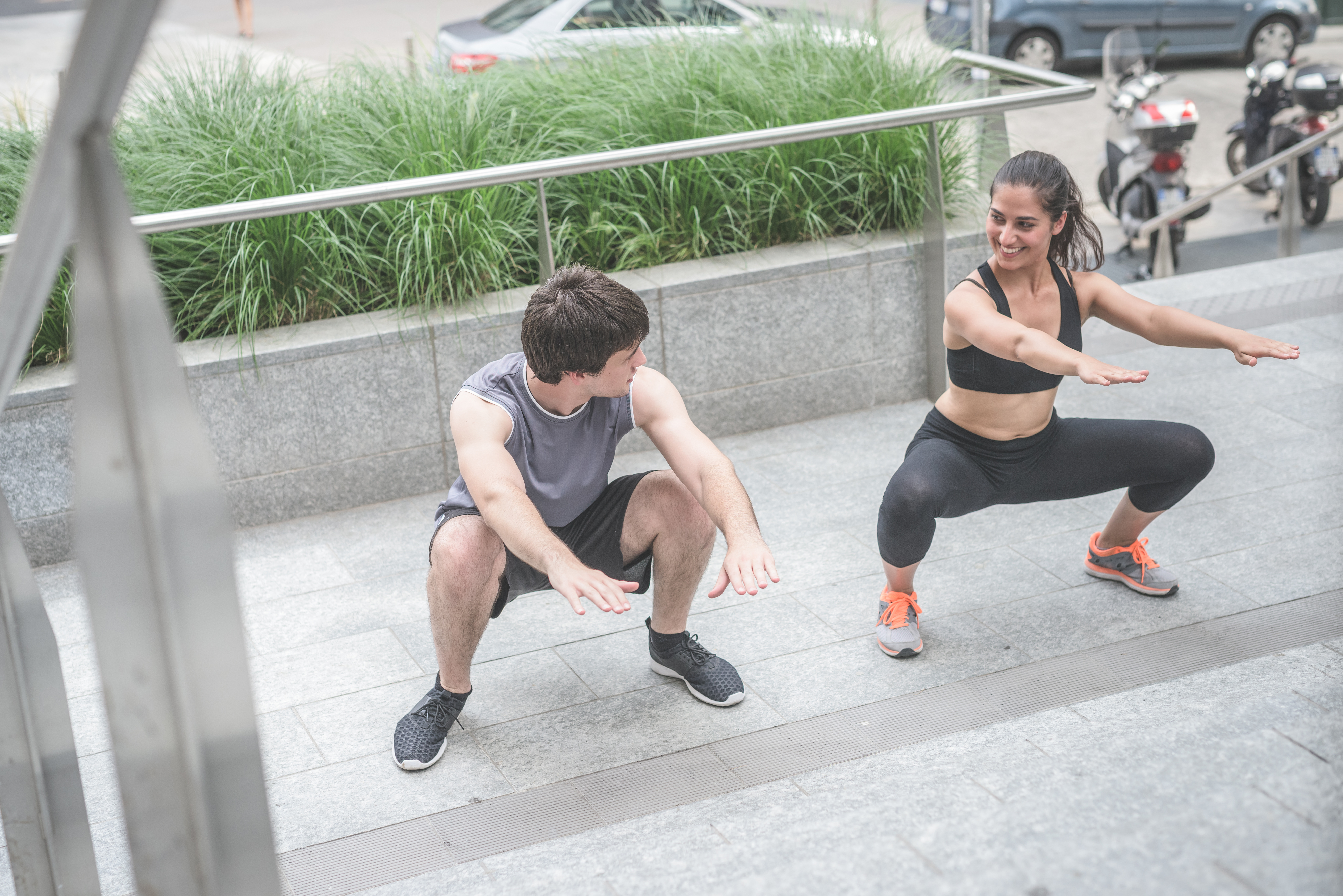
When you squat, how deep do you go? Does it even matter? When you first start squatting, doing a full squat might seem difficult. You might not even be able to complete a full squat on your first few attempts.
The formula for doing a standard squat is to lower your body to 90 degrees, where your thighs are parallel to the floor. Anything less than this is a partial squat. Once you lower your body below parallel, it’s technically a deep squat. It’s a bit harder to squat deeply, especially if you lack good hip mobility. But are there advantages to doing so?
The squat, whether it’s a full squat or a deep squat, is a compound exercise, a movement involves the action of more than one joint and more than one muscle group simultaneously. The advantage of doing compound exercises is they burn more calories because you’re using more muscle groups at the same time. Plus, they improve functionality by training muscles and joints how to work well together. This is in contrast to isolation exercises where you only work a single muscle group at a time. A classic example is biceps curls.
Squats primarily target the quadriceps, the muscles in the front of your thighs, but this exercise also works the muscles that make up the posterior chain, including your hamstrings and glutes. No wonder the squat is often referred to as the “king of exercises,” especially for working the lower body. When you go deep into a squat, you activate the muscles in the posterior chain more than when you do a partial or parallel squat.
This means you’ll target your hamstrings and glutes more. Hitting the hamstrings is important because many people, particularly females, have stronger quads than hamstrings and need more hamstring and glute strengthening. Going deeper shifts the focus toward the hamstrings and glutes for better muscle balance. When the quads are stronger than the hamstrings, research shows the risk of knee injury goes up.
Another benefit to deepening your squat is it may boost your ability to jump vertically. In one study, subjects who focused on deep squats using a barbell for resistance improved their vertical jump height by 13 percent. Those who didn’t go as deep boosted vertical jump height only 7 percent.
How to Increase Your Squat Depth
When you first try a deep squat, you may find it difficult. If so, work on improving the mobility in your hips and ankles. When you don’t have good mobility in these joints, it’s hard to do a deep squat. There are a variety of mobility drills you can do to boost hip and ankle mobility. Some simple ones you can do for your hips include hip circles and leg swings.
For your ankles, range-of-motion exercises and drawing circles with your toes with your ankles raised off the floor help boost ankle range-of-motion. These are movements you can add to the beginning or end of your routine to gradually build greater mobility in these joints.
Also, experiment with foot placement when you squat. Some people are anatomically more capable of doing a deep squat, but changing your foot placement can make it easier or harder for depending on how you’re built. Experiment with placing your feet closer together and further apart. Try turning your toes slightly outward and see if it makes it easier to go deep.
Take your time and increase your squat depth a little at a time. Keep working on improving the mobility of your ankles and hips. Also, stretch your calves regularly. Tight calves make it harder to descend into a deep squat.
Of course, always work on deep squats initially without any weight. Get the movement down before adding resistance. Many people add weights too quickly before they’ve mastered good squat form.
What about Your Knees?
There’s a common misconception that deep squats are inherently bad for your knees. The reality is deep squats aren’t harmful to healthy knees as long as they’re carried out using good form. If you use bad form, any squat places excessive forces on the knee joint.
When you descend into a deep squat, the compressive forces on your knee joint increase, but the shearing forces actually decrease as you squat below parallel. Shearing forces are “sliding” forces or the tendency of one part of the knee slides forward or backward. Compressive forces are those that push down. For example, when you squat, the femur bone in your thigh pushes down on the tibia, a bone in your lower leg.
Despite an increase in compression, studies show that healthy knees can handle this force as long as you use good form when you squat. Also, some studies show that the additional muscle activation you get with a deep squat is protective of the knee. Going deeper actually improves knee stability.
Conclusion
Learning to squat deeply helps you better target your glutes and hamstrings. Plus, going deeper will improve your functionality even more. However, don’t go deep until you’ve mastered a parallel squat and you’ve spent a few weeks working on ankle and hip mobility.
You don’t have to go deep into a squat every time you train. In fact, you should deep squat more than once a week. Do parallel squats the rest of the time. Also, don’t force yourself to deep squat until you’re ready. Good form is always more important than squat depth.
Keep in mind, this information applies to healthy knees. If you have a history of knee injury or knee arthritis, talk to a sports medicine physician before tackling deep squats. Also, regardless of knee health, don’t do a high volume of deep squats. Give your knees a chance to recover between intense squatting sessions.
References:
J Strength Cond Res. 2013 Jul; 27(7): 1765-1774.
Poloquin. “Don’t Be Afraid to Squat Low: 7 Reasons to Deep Squat”
Chiropractic Sports Medicine 6: 105-105, 1992.
Deep Squats and Knee Health: A Scientific Review. Tony Ciccone, Kyle Davis, Dr. Jimmy Bagley, & Dr. Andy Galpin. Center for Sport Performance, California State University, Fullerton
